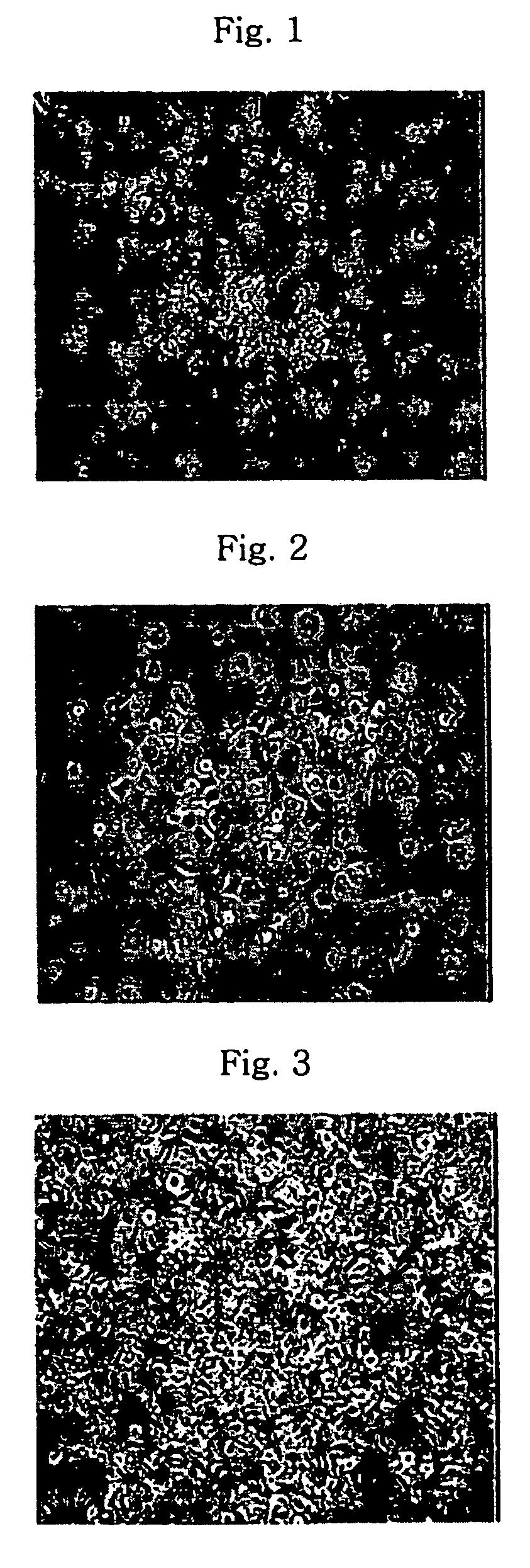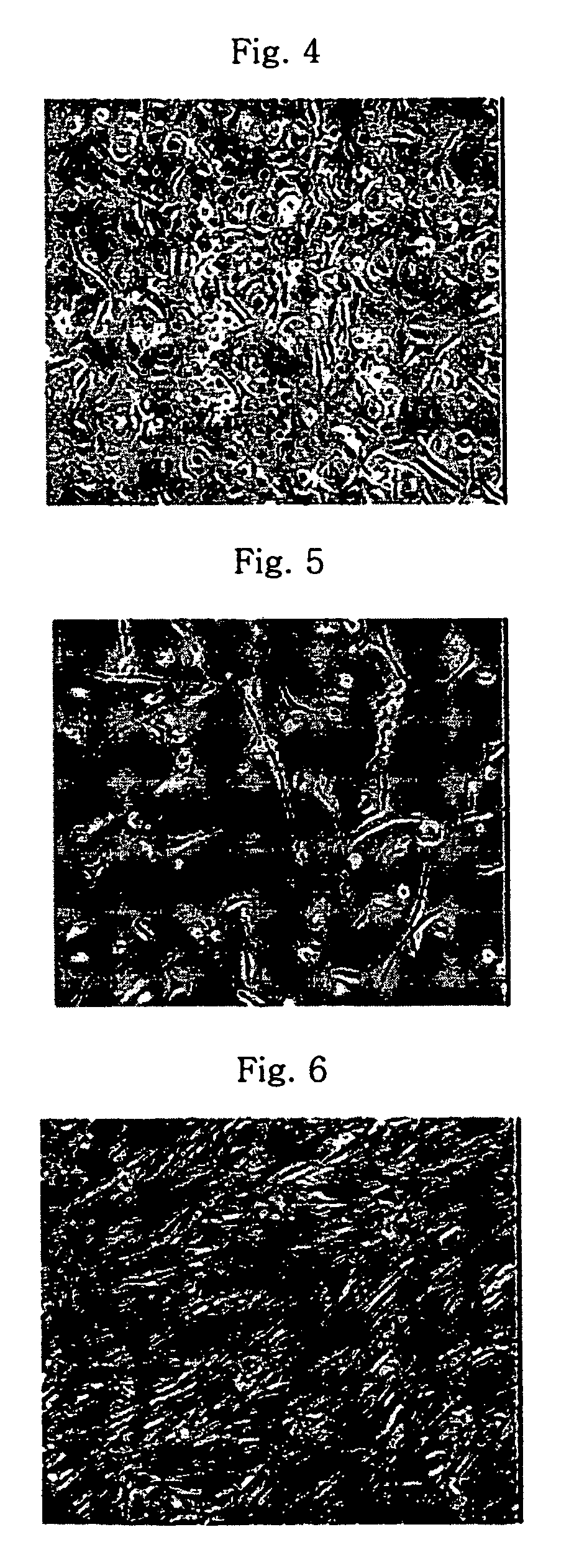Method of isolating and culturing mesenchymal stem cell derived from cryopreserved umbilical cord blood
a mesenchymal stem cell and umbilical cord blood technology, applied in cell culture active agents, artificial cell constructs, skeletal/connective tissue cells, etc., can solve problems such as difficult to solve problems, difficult to obtain mesenchymal stem cells, and difficult to acquire bone marrow
- Summary
- Abstract
- Description
- Claims
- Application Information
AI Technical Summary
Benefits of technology
Problems solved by technology
Method used
Image
Examples
example 1
Isolation and Culture of Mesenchymal Stem Cells
[0019]Umbilical cord blood units cryopreserved at −196° C. was thawed in water bath at 37° C. In order to isolate monocytes from the umbilical cord blood, the umbilical cord blood was diluted with two-fold volume of αMEM (alpha-minimum essential medium, Jeil Biotech Services, Korea) and was centrifuged at 300×g for 10 minutes at room temperature. The separated buffy coat layer was collected, diluted again with two-fold volume of αMEM, overlapped on Ficoll-Hypaque and centrifuged at 300×g for 30 minutes at room temperature.
[0020]In separating monocytes from blood, Ficoll-Hypaque, which is a polymer of Ficoll (sucrose polymer) and Hypaque (sodium ditrizoate), is largely used. Ficoll-Hypaque has a specific gravity of 1.077 g / ml, which is heavier than monocytes, but lighter than red blood cells, which makes it possible to separate the cells from each other by specific gravity difference therebetween. That is, when blood is placed on Ficoll-...
example 2
Characterization of Cell Surface Antigen of Cultured Mesenchymal Stem Cells
[0026]In order to determine the characteristics of cell surface antigen of the spindle-shaped mesenchymal stem cells isolated and cultured as described above, the cell surface antigen was analyzed by FACS. The results are shown in Table 1 below. FACS (fluorescence activated cell sorting; a flow cytometer) is used to analyze the characteristics of cells by attaching a luminescent immune antigen indicator to the surface thereof, or to separate cells containing a certain antigen indicator depending.
[0027]
TABLE 1IndicatorReactionCD14−CD34−CD45−SH2+SH3+CD29+CD44+CD90+CD166(+)
[0028]As shown in Table 1, the stem cells isolated and cultured in accordance with the present invention show negative reaction in CD34, CD45 and CD14, which are characteristic indicator of hematopoietic stem cells, positive reaction in SH2, SH3, CD29 and CD44, which are characteristic indicator of mesenchymal stem cells, and weak positive rea...
example 3
Comparison of Success Rate of Mesenchymal Stem Cell Culture
[0029]50 units of cryopreserved umbilical cord blood were cultured according to a conventional method and the method of the present invention, and success rates of cell culture were compared therebetween. The results are shown in Table 2 below.
[0030]
TABLE 2Conventional methodInventive methodNumber of mesenchymal stem049cell units acquiredSuccess rate of culturing (%)098
[0031]As shown in Table 2, the success rate of mesenchymal stem cell culture of the conventional method is 0%, while that of the present invention is a high success rate of 98%.
PUM
| Property | Measurement | Unit |
|---|---|---|
| concentration | aaaaa | aaaaa |
| concentration | aaaaa | aaaaa |
| volume | aaaaa | aaaaa |
Abstract
Description
Claims
Application Information
 Login to View More
Login to View More - R&D
- Intellectual Property
- Life Sciences
- Materials
- Tech Scout
- Unparalleled Data Quality
- Higher Quality Content
- 60% Fewer Hallucinations
Browse by: Latest US Patents, China's latest patents, Technical Efficacy Thesaurus, Application Domain, Technology Topic, Popular Technical Reports.
© 2025 PatSnap. All rights reserved.Legal|Privacy policy|Modern Slavery Act Transparency Statement|Sitemap|About US| Contact US: help@patsnap.com


